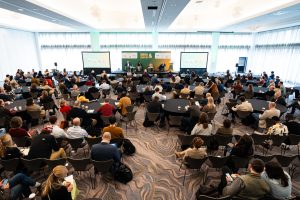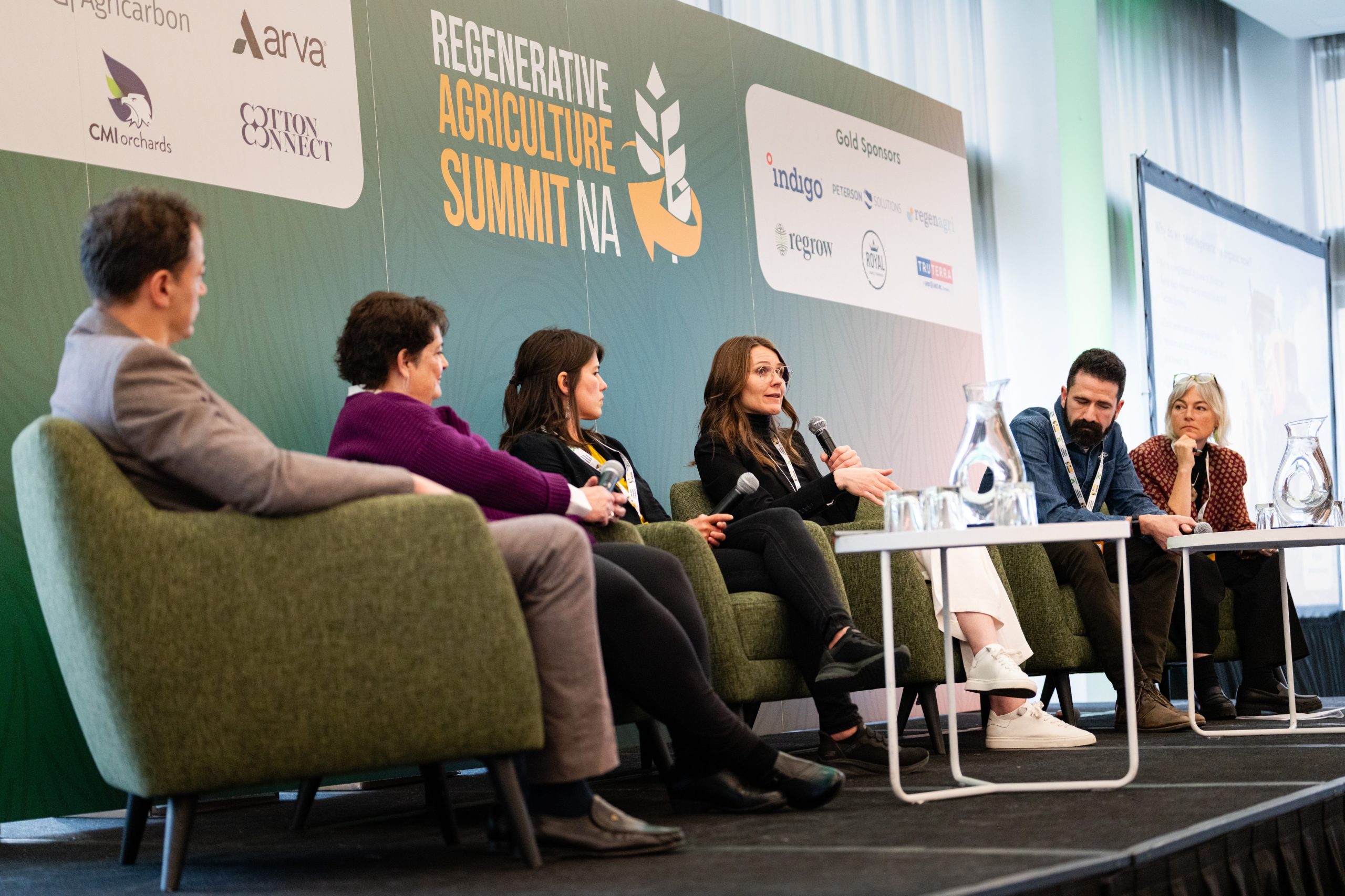Summit focuses on opportunities and challenges of scaling regenerative agriculture
Cross-industry collaboration and the need to educate consumers about the benefits of regenerative agriculture were common themes at the third annual Regenerative Agriculture Summit, held at the end of March in Chicago. About 450 regenerative leaders from across the food and agriculture supply chain attended the summit. These included farmers, input suppliers, grain buyers/suppliers, food and ingredient manufacturers, certifiers, and non-profit organizations.
Need for collaboration among regenerative certifiers
The summit opened with a session titled “Certifying Regen Agriculture: Seeking Common Ground” and featured representatives from five leading regenerative certification organizations, Regenified, Regenerative Organic Alliance, Soil & Climate Initiative, A Greener World, and regenagri.
“Regenerative agriculture is a journey, and it is a continuum,” said session moderator Erica Campbell, partner and co-founder of InCommon Group.
She pointed out that the United States has 900 million acres of farmland but only about 1% of that is farmed regeneratively.
“The tipping point is 10%, 100 million acres,” she said.
LaRhea Pepper, senior advisor of Regenerative Organic Alliance, which administers Regenerative Organic Certification (ROC), said it feels like the “wild wild west” with different regenerative certifications and said “It’s good to have a conference to build consensus. We need to work together around accreditation. There should be collaboration.”
Kristine Root, chief marketing officer at Regenified, said farmers having several pathways to regenerative certification is a good thing and emphasized the need for integrity in the standards.
“I would like to see cooperation (among the certifiers),” she said.
Emily Moose, executive director at A Greener World, said there are a lot of common threads in the different regenerative standards and emphasized the need for the standards to be meaningful and verifiable.
“There are ways to work together with equivalences or recognition of other programs,” said Adam Kotin, managing director of The Soil & Climate Initiative. “Supply chains will require us to work together.”
He also said “Those conversations are happening. There is a lot of land out there to be certified.”
All the panelists said their programs require reduction of synthetic inputs such as pesticides as part of a system of continuous improvement.
“Our program is based on a continuous improvement system,” said Franco Costantini, CEO of regenagri. “The system requires improvement over time.
Pepper said ROC, as an organic standard, prohibits the use of synthetic inputs and GMOs. Moose said her program also prohibits the use of GMOs and neonicotinoid insecticides.

About 450 regenerative leaders from across the food and agriculture supply chain attended the Regenerative Agriculture Summit.
“We need to work together”
Another session at the summit focused on “Scaling regenerative agriculture through collaborative action.” Leif Fixen, North American agriculture strategy manager at The Nature Conservancy, emphasized the need for brands to work together to scale regenerative agriculture.
“We’ve worked with companies. We’re starting to get more questions from CPGs [consumer packaged goods companies] about what investment will give us the biggest systems change. We need to start working together to implement systems change,” she said.
Tom Gates, values-led dairy specialist at Ben & Jerry’s, agreed. “The advantage is to share learnings,” he said.
Leah Wolfe, senior manager of sustainability and mission at Simple Mills, emphasized the need to think of regenerative agriculture as a “long-term investment instead of a short-term cost. “We need to move from a scarcity mindset to a more collective approach; we need to work together,” she said.
Graham Tabor, head of knitwear and strategic advisor of sustainable supply chain solutions at Thom Browne, Inc., said collaboration can benefit everyone in the supply chain.
“More cross-industry collaboration can make these systems more profitable. It’s about taking the time to build relationships throughout the supply chain and being able to communicate the lessons and successes,” he said.
Casey McCausland, a Regenified-certified farmer in Illinois, gave his perspective from the farm level. “If want farmers to go down this path, they need to be rewarded for what they’re doing,” he said.
Importance of consumer education
Consumer education was another common theme at the summit. McCausland emphasized the need to educate consumers about the benefits of regenerative agriculture.
“I get a ton of questions from people about regenerative,” he said. “Food brands should come together to educate consumers.”
“We all have a role to play,” Root said. “There is a lot of work to do and a lot of interest. Consumers can unlock the connection between their values and the benefits of regenerative agriculture.”
Regenified surveyed consumers about regenerative and found that 20% of the U.S. population care about the results that regenerative agriculture produces.
“They want to see a healthier food system, and they want farmers to have good lives,” Root said.
Still, she said many consumers are confused about regenerative agriculture.
“We want to see consistent language,” Pepper said. “We need to have unified voices when speaking to consumers.”
An audience member suggested “composting” the word “sustainability” in consumer education to move the focus to regenerative agriculture.
“We need to make sure regenerative doesn’t go the way of sustainable,” said Kotin.
In a session about regenerative agriculture in textiles, Inka Apter, senior director of materials and circularity at Eileen Fisher, which sources ROC cotton for its clothing, said, “It’s not easy to communicate [regenerative] to a customer. It requires creating tools, articles on websites, in store materials, or on label. It’s not easy; there is confusion.”
Apter says her company uses stories about cotton growers and sheep farmers to communicate the benefits of regenerative agriculture.
“Regenerative is a positive impact that goes beyond just carbon,” she said.





